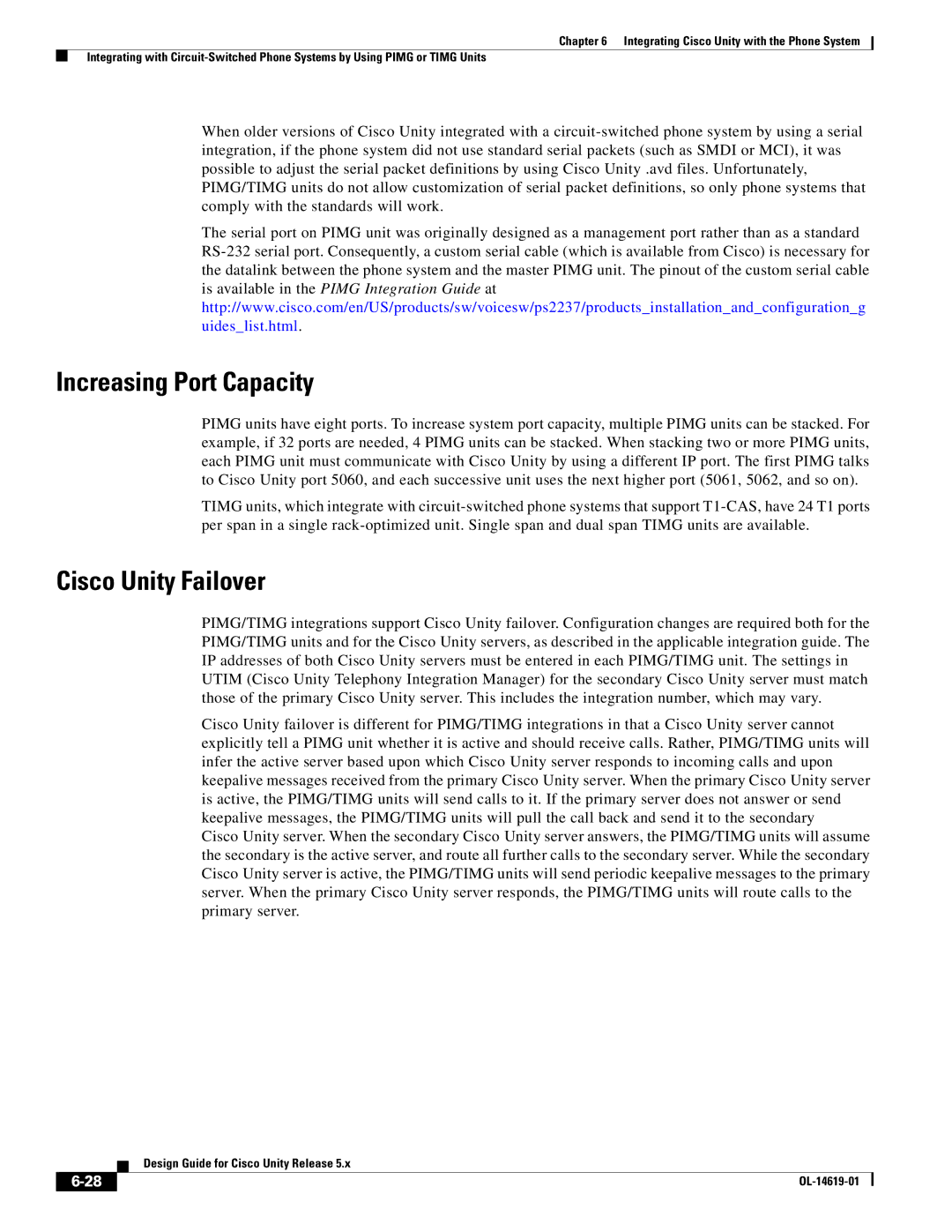
Chapter 6 Integrating Cisco Unity with the Phone System
Integrating with
When older versions of Cisco Unity integrated with a
The serial port on PIMG unit was originally designed as a management port rather than as a standard
Increasing Port Capacity
PIMG units have eight ports. To increase system port capacity, multiple PIMG units can be stacked. For example, if 32 ports are needed, 4 PIMG units can be stacked. When stacking two or more PIMG units, each PIMG unit must communicate with Cisco Unity by using a different IP port. The first PIMG talks to Cisco Unity port 5060, and each successive unit uses the next higher port (5061, 5062, and so on).
TIMG units, which integrate with
Cisco Unity Failover
PIMG/TIMG integrations support Cisco Unity failover. Configuration changes are required both for the PIMG/TIMG units and for the Cisco Unity servers, as described in the applicable integration guide. The IP addresses of both Cisco Unity servers must be entered in each PIMG/TIMG unit. The settings in UTIM (Cisco Unity Telephony Integration Manager) for the secondary Cisco Unity server must match those of the primary Cisco Unity server. This includes the integration number, which may vary.
Cisco Unity failover is different for PIMG/TIMG integrations in that a Cisco Unity server cannot explicitly tell a PIMG unit whether it is active and should receive calls. Rather, PIMG/TIMG units will infer the active server based upon which Cisco Unity server responds to incoming calls and upon keepalive messages received from the primary Cisco Unity server. When the primary Cisco Unity server is active, the PIMG/TIMG units will send calls to it. If the primary server does not answer or send keepalive messages, the PIMG/TIMG units will pull the call back and send it to the secondary
Cisco Unity server. When the secondary Cisco Unity server answers, the PIMG/TIMG units will assume the secondary is the active server, and route all further calls to the secondary server. While the secondary Cisco Unity server is active, the PIMG/TIMG units will send periodic keepalive messages to the primary server. When the primary Cisco Unity server responds, the PIMG/TIMG units will route calls to the primary server.
| Design Guide for Cisco Unity Release 5.x |
|
